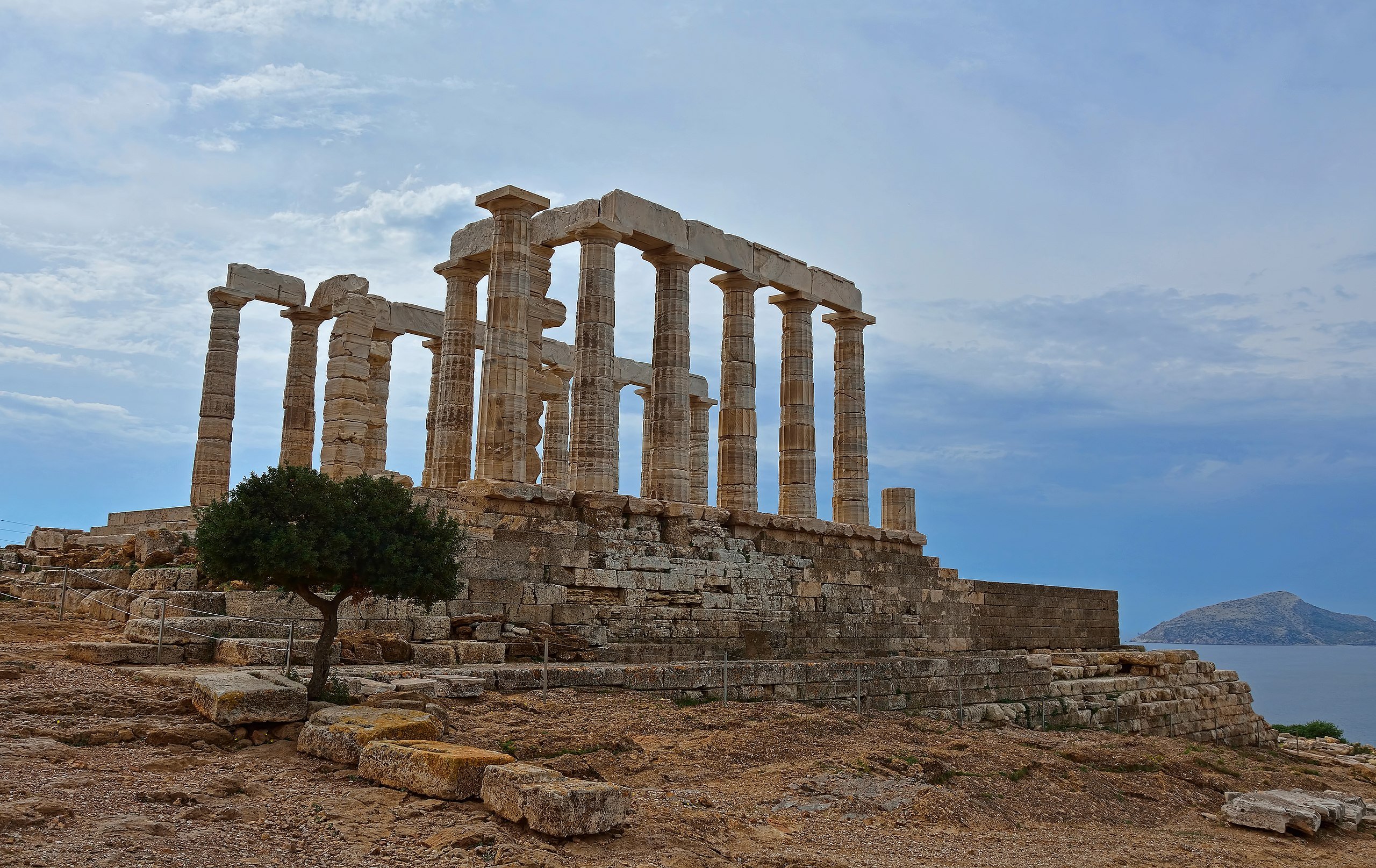
Greece is full of some of the most famous archaeological sites in the world, such as the Acropolis, Mycenae, and Knossos. There are so very many sites around the nation, and many amazing sites in the Attica region, home to the Greek capital of Athens, that still remain relatively unknown even to natives themselves.
Archaeology enthusiasts who have already seen the most popular ancient sites in Greece may learn something new at these lesser-known archaeological marvels, as well.
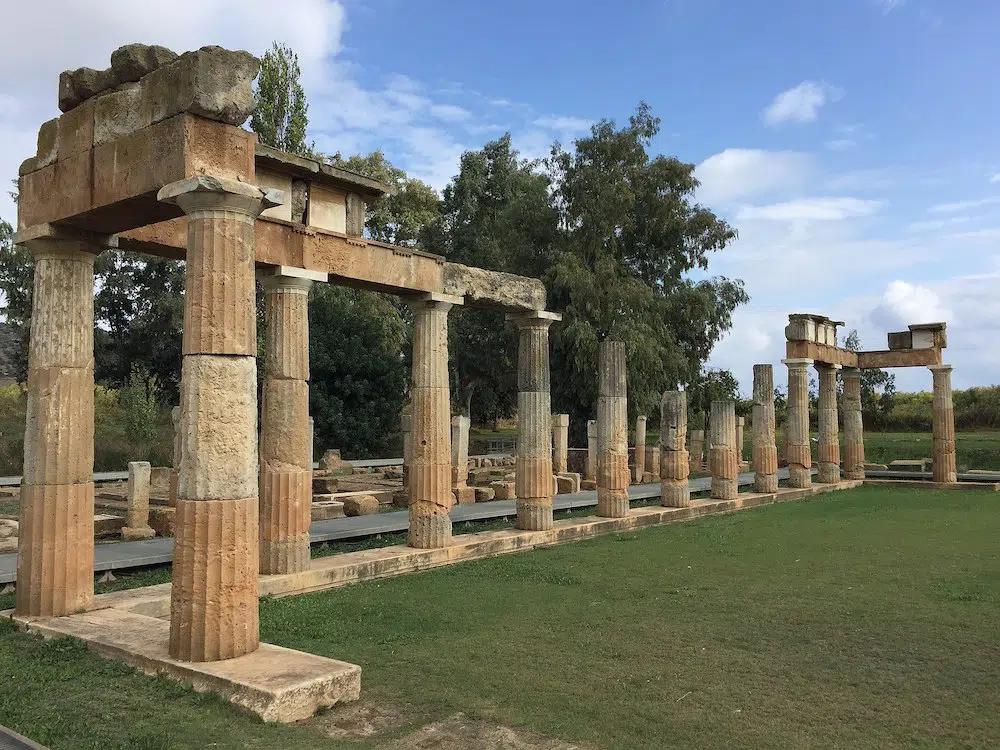
Brauron was home to a sanctuary of goddess Artemis
The archaeological site of Brauron is located in the modern town of Vravrona along the eastern coast of Attica near the Athens International Airport.
Brauron, which was once one of the twelve cities located in ancient Attica, remained a vital site throughout antiquity.
While the temple and other architectural elements at the site were constructed in the 5th century BC, the site had been inhabited since the Neolithic period at around 2000 BC. It was also an important site in the Mycenaean period.
The site contains a remarkably well-preserved temple to Artemis, a sacred spring, small cave shrines, a stone bridge, and a unique stoa shaped like the Greek letter Π.
Brauron was an important cult site, as many ancient Greeks made pilgrimages to the sanctuary to Artemis there and prayed, worshiped, and dedicated offerings to the goddess by throwing them into the sacred spring.
Worshippers of the goddess convened at Brauron to celebrate Artemis at the Arkteia festival held every four years. Participants walked from the sanctuary at Brauron to the Acropolis of Athens located nearly 25 km, or 15 miles, away.
At the festival, young Athenian girls approaching maturity were deemed arktoi, or she-bears, and took part in sacred dances, donned saffron-colored robes, ran races, and made sacrifices.
The site remained important throughout antiquity until the third century BC when tensions between the northern Greek Macedonians and Athenians flared, and the site was therefore abandoned.
It is a unique site because of its distinct connection to the feminine. Countless jewelry boxes, mirrors, and vases depicting young girls racing and dancing have been found at the site. The Archaeological Museum of Brauron, located next to the archaeological site, has many of these priceless objects on display.
The Temple of Poseidon at Sounio
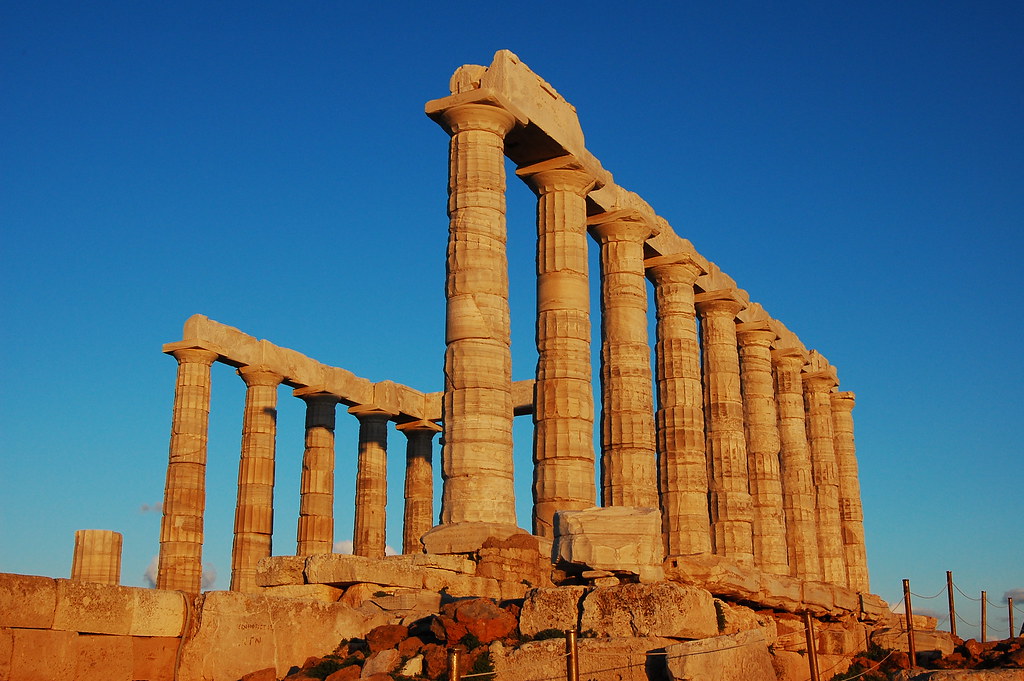
The Temple of Poseidon at Sounio is an ancient monument situated at the southern tip of Attica, on Cape Sounio.
The temple is one of the major monuments of the Golden Age of Athens. Located in a stunning position atop the headland, it is surrounded on three sides by the sea.
Just a short bus ride away from the center of Athens, the archaeological sites there are a great choice for a quick day trip from the Greek capital.
It was constructed in 444–440 BC, during the ascendancy of the Athenian statesman Pericles, who also rebuilt the Parthenon in Athens.
Perched above the sea at a height of almost 60 meters (200 feet), the arrestingly beautiful structure was built on the ruins of an earlier temple dating back to the Archaic period.
Before the current temple was built, there was a much earlier Archaic temple, also dedicated to Poseidon, at the site.
Although there is evidence of its destruction at the site, it is unclear who razed the Archaic temple at Sounio.
Many believe that, as it was determined that the temple was destroyed around 480 BC, Persian troops under the leader Xerxes must have demolished it.
While there is no direct evidence to bolster the claim, tragically, the Persian troops did destroy a number of temples and monuments around Greece during the war, including all of the archaic structures on the Acropolis in Athens.
The design of the temple is a typical hexastyle, which means that the front portico has six columns.
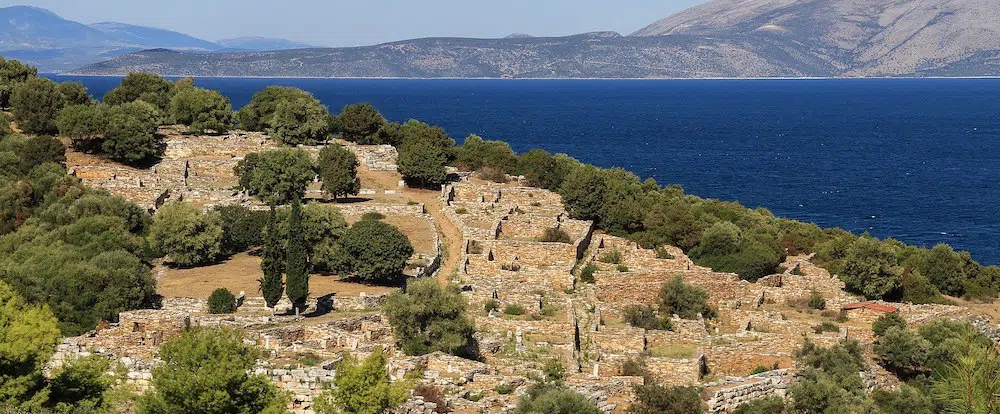
Rhamnous
Rhamnous was an ancient Greek city that was home to the most significant sanctuary of the goddess Nemesis, also called Rhamnousia, who was the goddess of vengeance and retribution.
The archaeological site is considered to be the best preserved of all ancient demes of Attica, and the city was important in antiquity as it is strategically located along the coast of Attica facing the island of Evia.
Due to its location, Rhamnous was a well-protected city with a fortified acropolis looming over its two small harbors. The city adopted its name from a local shrub that grew throughout the region.
Currently, visitors to the site can wander through the ruins of the city and marvel at the ancient temples, located next to each other, dedicated to Nemesis and Themis, the goddess of justice.
The temple to Nemesis once contained a sculpture of the goddess said to be created by a student of the sculptor Phidias and now located in the British Museum. The once massive work was reduced to just a damaged head when it was discovered in the nineteenth century.
An ancient statue of the goddess Themis from Rhamnous is now located in the National Archaeological Museum in Athens.
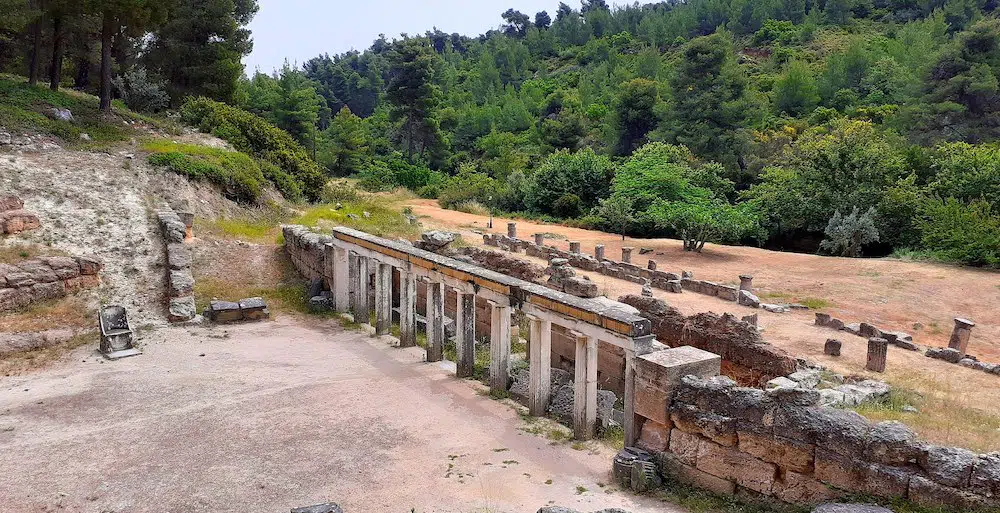
Amphiareion of Oropos
Located in Oropos, a town in east Attica, the archaeological site of the Amphiareion was home to a sanctuary dedicated to the ancient Greek hero Amphiaraos in the late fifth century BC.
In ancient times, pilgrims traveled to the site for advice from the oracle there and for healing. Amphiaraos was a significant figure in ancient Greek mythology, as he was said to be a descendant of the seer Melampos, and he refused to participate in the attack on Thebes since he could tell it would end disastrously.
Archaeological evidence shows that the site became very popular in the fourth century, as people began to rapidly erect new structures there at the time. The Amphiaraon contained a sacred spring, a temple to the hero Amphiaraos, along with a cult statue of the figure, a theater, stoa, and other small structures.
Many historians note that the site’s popularity as a place of healing grew during the period when a plague hit Athens in the late fifth century BC.
Inscriptions in Greek and other languages show that the site was a popular pilgrimage spot throughout the ancient world, even amongst non-Greeks.
In addition to an annual festival at the site, there was also a Greater Amphiareia festival held at the site every five years during which athletes competed in various games.
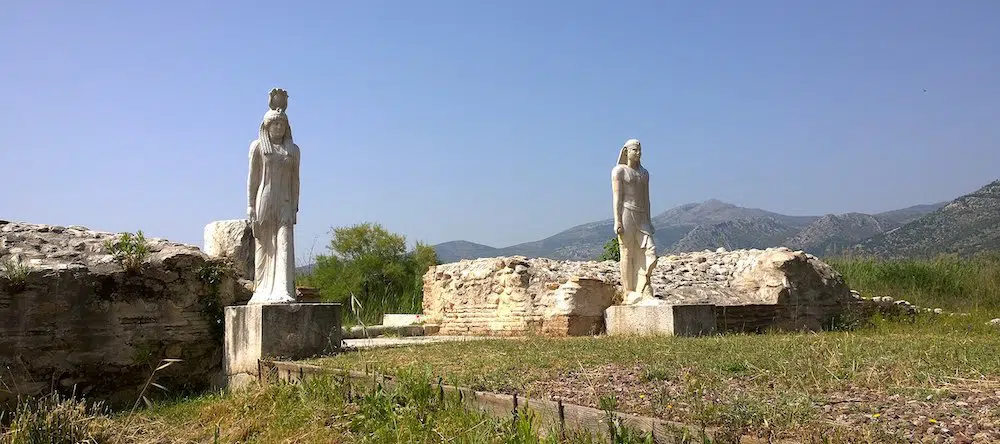
Sanctuary of Egyptian Gods in Nea Makri outside of Athens
In Nea Makri, a town located in east Attica, stand two imposing sculptures of ancient Egyptian gods. They mark the site of the Sanctuary of Egyptian Gods, built there in 160 AD by Herodes Atticus, who was a significant sophist and Roman politician of Greek descent.
Many posit that the sanctuary may have been built on the estate owned by Herodes Atticus, as he lived in the area for a time in antiquity.
The mix of ancient Greek and Egyptian elements mirrors the Serapeion, or temple featuring elements from both cultures, that was built by the Roman Emperor Hadrian in Tivoli a few years earlier.
The site is home to the impressive sanctuary as well as a luxurious Roman bathhouse.

Thorikos, Lavrio is located south of Athens
Thorikos was an ancient Greek city located south of Athens near the lead and silver mines of Lavrio. The site has been inhabited since the Neolithic period and was likely significant due to its abundant lead and silver deposits.
Mycenaean tombs and structures connected to the mines have been discovered at the site.
The mines located in the area made it an especially significant site for the Athenians, particularly in times of war.
The mines thrived during Greece’s Classic Period with slaves doing the backbreaking mining of the metal ores. The city-state of Athens exploited the mines to the full, and they became a vital source of revenue.
In the 4th and 5th centuries BC, the output of the Laurion mines represented a total of 25 percent of the Athenian state’s annual wealth.
Currently, the ruins of the ancient city center of Thorikos along with its acropolis are still visible. Additionally, there is an ancient theater, built around 525 to 480 BC, located at the site. This is thought to be the oldest standing theater in the world.
Unlike Greek theaters built in later eras, it is elliptical rather than circular in shape and has a rectangular rather than circular orchestra.
With twenty-one rows of seats, the theater had an impressive seating capacity of 4,000 people when it was constructed.
The few people who visit the site today can see the base of an ancient temple on the east side of the orchestra, sculpted out of the bedrock, and a room — complete with benches — also sculpted from the rock.
There are also two temples in Thorikos, the smaller of which is thought to have been dedicated to the goddess Hygeia and the larger of which was the temple of Demeter and her daughter, Persephone.
See all the latest news from Greece and the world at Greekreporter.com. Contact our newsroom to report an update or send your story, photos and videos. Follow GR on Google News and subscribe here to our daily email!



